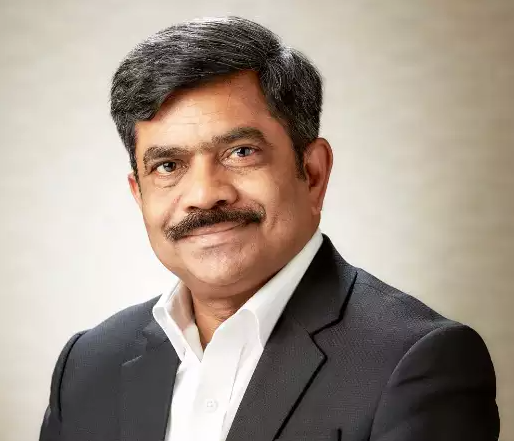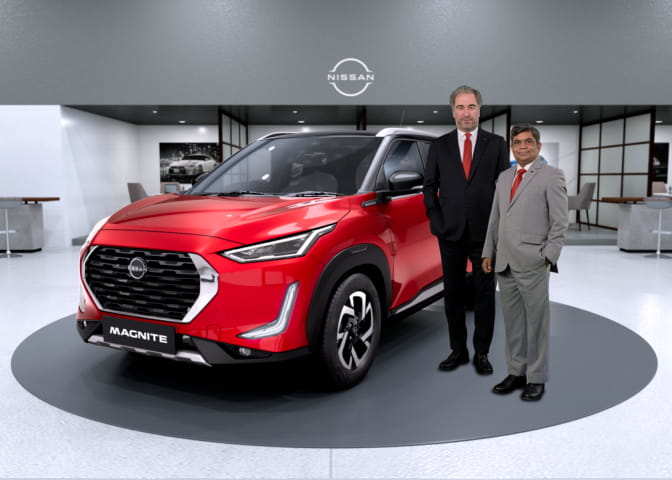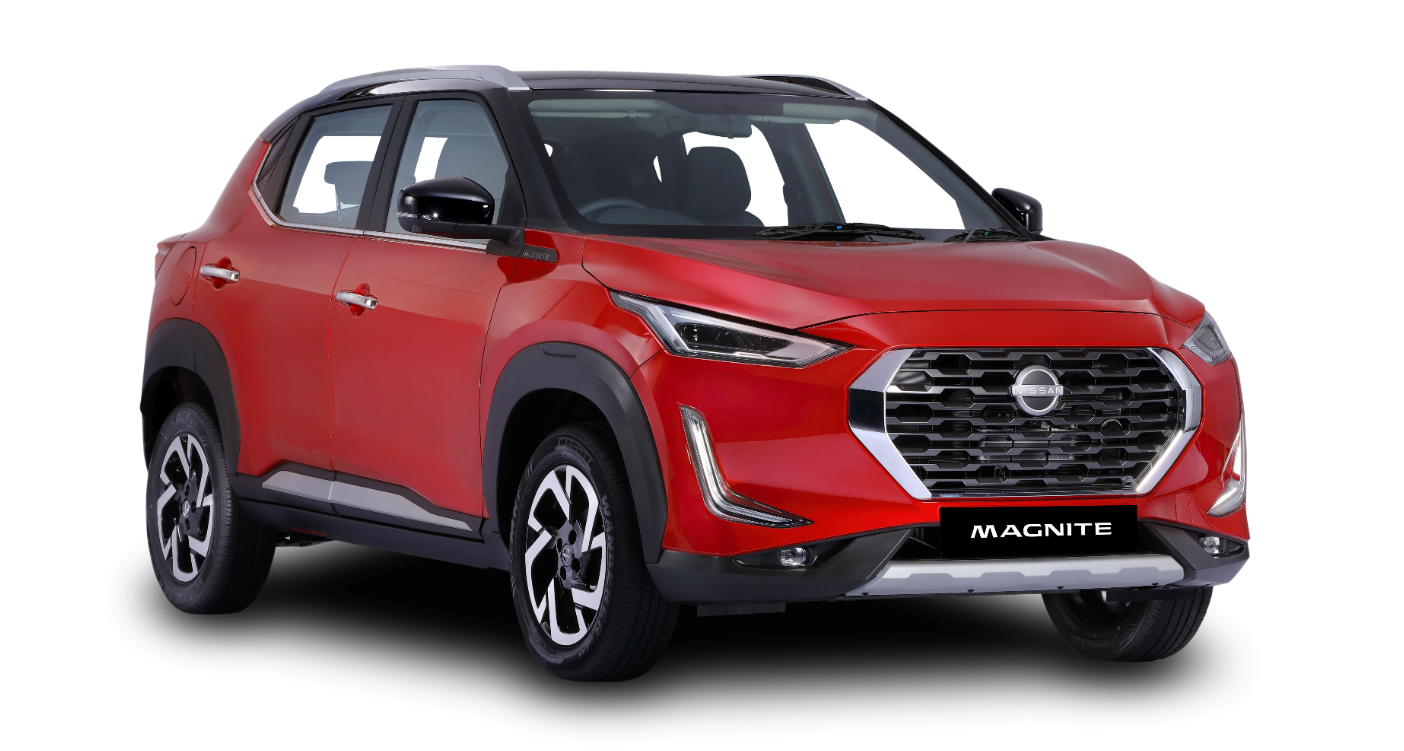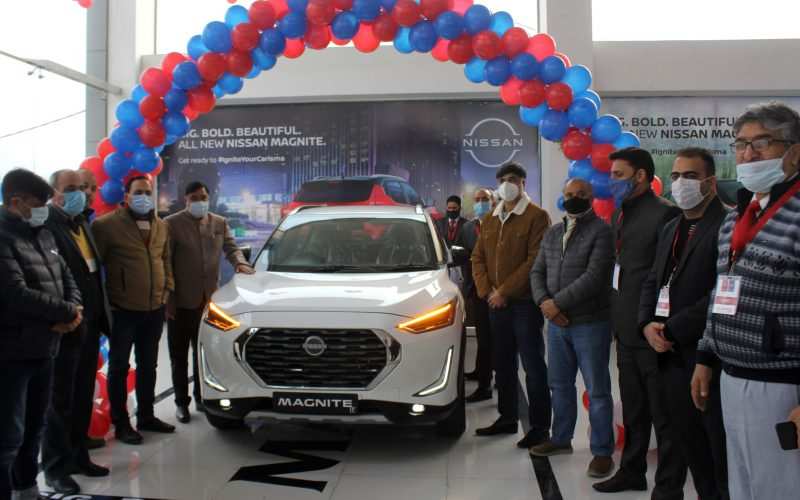
New Delhi: 15,000 bookings in just 17 days for the all-new Nissan Magnite! That’s an impressive claim made by the Japanese automaker. The company pins all its hope on this ‘big, bold and beautiful’ B-SUV to shore up its Indian market share from an abysmal 0.3%. Magnite has created a wave with its highly competitive pricing (INR 4.99 lakh (ex-showroom) and many segment-first features. But the bigger question is how will Nissan meet the demand with its limited production capacity?
Currently, there is a waiting period of 2-3 months for the Magnite. The Renault-Nissan alliance plant in Chennai can make about 5,000 units a month. Will Nissan be able to keep up with the bookings and delivery, especially as its partner Renault also is bringing its product Kiger by March? In a candid conversation, Rakesh Srivastava, managing director, Nissan Motor India Pvt Ltd, speaks about the company’s strategy, transformation plan based on prioritisation and rationalisation, upcoming product and export strategy. Edited Excerpts:
Q: Nissan’s market share remains at 0.3% in India. The company has been here for over a decade now. You have earlier worked with the country’s largest and second-largest carmaker by volume. Today you’re in a position where you have a minuscule market share. What is the difference in terms of operating, and what are your key focus areas?
A: Nissan has invested almost INR 6,000 crores on manufacturing, R&D, supply chain, finance, sales and channel partners. For us, India is a very important market, and we will continue to rationalise and prioritise our investments and India.
The all-new Nissan Magnite plays a very strategic role in the ‘Nissan Next’ transformation plan chalked out by our CEO Makoto Uchida and COO Ashwani Gupta. We had the global preview and the global launch of Magnite in India. In 17 days, we have received 15,000 bookings.
To run any company and have sustainable growth, one has to rationalise and prioritise, and I think that’s the name of the game. Our focus in India is sustainable growth, and towards this, we will rationalise, prioritise and look at our product portfolio. We will look at multiple elements in terms of the sales format, optimising our production capacities and looking forward to delivering more and more value to our customers.
The focus on customers will continue to be our priority. We will continue to do so by bringing in more value to our customers, more convenience and comfort, and ensuring our channel partners’ engagement and motivation to deliver values to the customer.
Four key parts come in terms of making anything happen very strongly. If you take the customers’ insights, you will be able to do the right things in terms of product development. You will create a channel that is far more focused on engaging and delivering on values.
Our focus in India is sustainable growth, and towards this, we will rationalise, prioritise and look at our product portfolio, multiple elements in terms of the sales format, optimising our production capacities and looking forward to delivering more value to our customers.~
When you build on the Japanese DNA and engineering format, it helps you deliver quality and manage costs. I think that’s another key part of it.
Localisation is another key element and India plays a significant role in exports, especially in the auto sector, and Nissan has been a very strong player in exports. So our philosophy will continue to ‘Make in India and make for the World’.
Q: You have been a champion in enhancing the volume or working on the penetration or even customer satisfaction in your previous assignment. Please share with us what went wrong and what was the reason behind the diminishing market share and volume of Nissan in India? And how are you going to correct those? What measures are you taking?
A: For me what matters the most is the way forward based on the learnings we have, and I think the way forward for us is delivering more value to our customers by bringing in the Nissan DNA, technology, and performance in our products.
Nissan stands for innovation and we would like to bring it to our customers very strongly. Nissan is known worldwide for its robust SUV DNA. Nissan Patrol, Qashqai, Juke and X-Trail are testimony to the strong global SUV DNA. The all-new Nissan Magnite carries that DNA and appeal.
Q: But the products you mentioned are the premium ones. Magnite is into the mass segment. So, how are you going to strategise? Is it going to lean towards the mass segment or you want to create a niche in terms of premium SUVs?
A: Premiumness is driven by way of the product. The styling of the product, the features and benefits that it brings to the customers. I think this drives the product.
For Magnite we have been able to bring in a lot of firsts to our customers. It has many firsts in terms of the multiple technologies it brings.
Q: No doubt, this is one of the best products that we have seen in the Indian market at such a price point. Your partner Renault also did good numbers with Kwid. But is your Magnite going to be one of the products because largely we have seen the company has only a single product. It does not have many products working in the market. So, what’s after Magnite, and how long can you sustain the demand? How much capability do you have to support this kind of demand?
A: As part of the Nissan Next transformation plan, the two key elements are rationalising and prioritising. Our current priority is the all-new Nissan Magnite. We will look forward to delivering it to our customers at the earliest possible time. Almost 15,000 customers have booked this product in 17 days. We will be supplying them in 2021 , and we are all gearing ourselves up to give them an enriching experience.
Q: How will you align your production because your alliance partner is also going to cut the share from there? What’s your production and how many you can produce in a month as there is restraint. Do you think it can sustain looking at your network that has been trimmed down over the last few months? So, how are you working for that and is there a plan to expand your network also?
A: The volumes are always determined by market dynamics and we strongly believe that the all-new Nissan Magnite is a breakthrough product with capabilities to redefine the B-SUV segment space.
We are still trying to work out how best we can produce more, and I will be able to share this. Currently, the waiting periods are going very high in the range of around two to three months. I believe the support that we have from our supply chain and manufacturing unit would help us and we would be able to bring in more and more units to our customers.
Q: You talked about Nissan NEXT, which means a new avatar of Nissan in India. How does it look? What kind of volume and market share do you see? What kind of product portfolio one can expect?
A: Nissan NEXT is already on a roll in India as a part of the transformation plan. It is a global transformation plan, and towards this newer products will be introduced in the market. In India, the Nissan NEXT starts with the introduction of Magnite.
It’s a very strong and well-defined strategy focused on rationalisation and prioritisation coupled with new market introductions. We will be leveraging our technology prowess in the marketplace and our global expertise to enrich the local market.
Q: With the launch of Magnite, will the brand Datsun be completely off-roaded?
A: We will continue to work on both of them to deliver good quality products and a good experience to our customers, that I can say as far as our Indian customers are concerned. I’m very happy to be part of both and would love to continue with both of them.
Q: Will products be rolling out on the Datsun badge also because Magnite had the option of using the Datsun badge, but you chose to bring it under Nissan. Why?
A: For me, Nissan and Datsun will coexist, and we would love to bring our products to the customers, in terms of looking at how the customers are originating, what are their preferences, what technology excites them, and the kind of styling that they would prefer in the marketplace. All these insights will go towards developing newer products. I am happy to present both Nissan and Datsun in the Indian marketplace.
Q: How did you strike such a price, are you making money on them because the pricing is too competitive?
A: In the marketplace, whenever you are operating, you have to take care of multiple stakeholders, and I think that’s the key element of any product development. It all comes down to the one core of delivering value to the customer.
We are still trying to work out how best we can produce more. Currently, the waiting periods are going very high in the range of around two to three months.~
When we worked on the all-new Nissan Magnite, the biggest thought we had was that India is a big and bold country. The Indian customer also seeks the big, bold and beautiful and this thought went into the development of the all-new Nissan Magnite.
Q: I would like to understand the supply chain aspect of the company. You are probably having a capacity of about 4,000-5,000 units a month, but you’re talking about a booking of 17,000 in a month. So if the waiting period goes very long, how are you going to support that? What’s the plan in place? Secondly, your partner will also bring a product on the same platform in the next one or two months. So, how are you going to balance that competition? Your network has been small. Do you want to expand this further?
A: When we talk about ‘Made in India and Made for the World’ is one of the defining pillars of Magnite, it happens on the supply chain’s strength. I’m happy to say that 90% of the all-new Nissan Magnite is localised with the components being provided by our Indian supply chain.
So, in terms of production, we are geared up. Yes, there is a 2-3 months waiting period for the product, and my request to my channel partners would be to enhance the capacity so that we can serve our customers at the earliest possible time.
In terms of customer-centricity and giving confidence to the customer, multiple actions are being taken by us. We have 24×7 roadside assistance for Nissan customers in more than 1,500 cities, and this is a standard offering from our side.
In terms of customer reach, around 120 workshops are present in 12 cities and we are adding more and more of them. The all-new Nissan Magnite has the lowest cost of ownership in the segment at 29 paise per km.
We are actively engaging with our customers through the conventional format, but more so through the digital format because that is the way to go forward. I can assure our customers that when they need to reach us, we’ll be there and we’ll do everything from our side, from providing our products to them and servicing their needs.
Q: In the last three-four years, we have seen many dealerships separating from Nissan. Are you trying again to expand your physical sales outlets? Also, your presence is still in limited places right now. Do you want to expand that, what’s your target there?
A: To me, the most important is customer-centricity, and there are two elements to it. One is the consumer of the product, and the second is my internal customers, i.e. channel partners. Aligning both of them together is the most important aspect. Our channel partners are doing everything to engage with the customers, especially on the safety protocols, by ensuring that the processes are followed, resources are deployed, and the training element is involved. This was the most important aspect of the business continuity when we moved over from the lockdown.
I will say we will like to take it step by step, but I would like to assure our customers, our channel partners, and the stakeholders that Nissan will make its move whenever the need arises.On product strategy & expansion
One of the key supports that we give is that we do not take a single paisa from the dealer margins for running any consumer promotion. They enjoy 100% dealer margins and that is very well appreciated by our channel partners. Our channel partners have effectively engaged with customers when we have around 200 to 300 walk-ins to the showroom.
Q: But, what after Magnite? How is the product line-up shaping? How many products can we expect in the next financial year? How will you come out of the perception that these companies remain a single product miracle kind of thing?
A: We have invested almost INR 6,000 crore in the Indian market and our commitment to India intact. Our current priority and our proposed priority is the all-new Nissan Magnite. I have to manufacture a good number of units to ensure that I can serve my customer at the earliest possible time.
I will say we will like to take it step by step, but I would like to assure our customers, our channel partners, and the stakeholders that Nissan will make its move whenever the need arises. Just wait for it when the time comes we will definitely share it with you.
Q: You just talked about the Indian market as a big opportunity. How is Nissan planning to leverage this opportunity, being one of the most prominent global players? What is the rightful place in terms of market share? Where do you want to go and how long do you think it will take for you to have that decent market share?
A: Our COO Ashwani Gupta has very clearly defined to us, it is the value that matters and not the volume, and we have to be very value-focused. Winning the hearts and minds of the Indian customers is the company’s focus, and I can tell you volume comes on its own. Much work has to go in terms of understanding the needs and wants of the Indian customer, picking up the right insights and bringing them into the development of the product, and creating a stronger business model for our channel and supply chain partners. And that is what our focus would be on.
Q: The government is planning to introduce the PLI scheme for the automotive sector. Nissan has been traditionally one of the companies that leverage the export opportunity from India. How is it going to trigger your exports further? And what kind of exports are you looking at in the long-term? How do you want to take advantage of this scheme that will be rolled out anytime soon?
A: I think lots of changes are happening in the marketplace, and there is a very strong push from the government to enable the ‘Make in India’. We are engaged with our distributors and many sales companies to understand the demand that can emerge for our current products from the marketplace.
We will definitely evaluate the opportunities, including for the all-new Nissan Magnite, for export to continue on our strong journey of bringing in global products to our customers in India and the export market.
Q: What is your current export level? Do you think you will be able to export Magnite anytime soon looking at the fantastic response from the local market?
A: Exports got definitely disturbed with the COVID-19 and the lockdowns in India and across the globe. Many markets had their own challenges. We also had difficulties in the supply chain. So, our focus is first to meet the domestic requirement. The all-new Nissan Magnite will definitely explore opportunities globally for the export market, and we are engaged with our distributors across the world to understand the requirement, and we will announce this very shortly and the markets that we will be exporting first.


















